Last week I brought you the top 13 items that we posted in 2013 on social media… now it is time to take a look at what was popular on the blog. Since 2013 was Grand Central’s centennial year, much of our coverage dealt with the history of the Terminal, and you’ll certainly notice it in our list. As mentioned last week, 2013 was also Metro-North’s 30th anniversary. Although the year was fraught with issues, Metro-North has come a long way in 30 years. Metro-North’s president, Howard Permut, who has been with the railroad for all of those years, has recently announced his retirement, making 2013 the final full year of being at the helm of Metro-North. Hopefully 2014 shall bring good things. Anyway, here is a peek at what you all loved (and in some cases hated) last year…
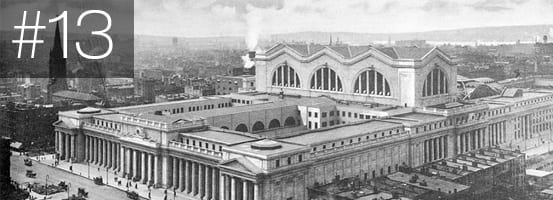
New York City’s other great station – more photos from the Farm Security Administration
New York Central fans don’t really want to admit that the Pennsy actually had cool things… or at least a few of them. And yes, one of them was the beautiful Pennsylvania Station in New York. It felt appropriate to take a look at Penn Station during Grand Central’s centennial year, because if it were not for the destruction of that station in 1963 bringing people together for the cause of historic preservation, Grand Central would likely have fallen to the wrecking ball as well.
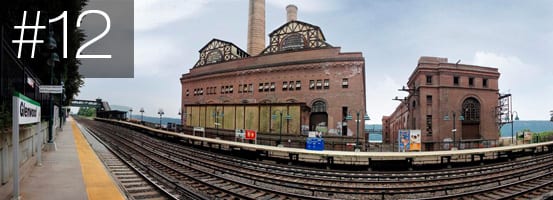
Decay and Rebirth: the Glenwood Power Station
Abandoned buildings always hold a special place in my heart, and seem to be an interesting topic on the internet. The old New York Central power station in Glenwood was once an integral part of the rail system in New York – it helped power all the new electric trains that would be operating into the new Grand Central Terminal. But like many things, the station eventually became obsolete, abandoned, and for the most part forgotten… although there are some plans for redevelopment on the table.
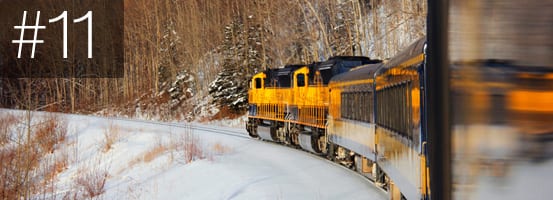
Riding the Alaska Railroad, Part 1
The first of many posts on Alaska in 2013, we take a quick look at Alaska’s trains in the winter, and look back into the early history of the Trans-Alaska Pipeline. Before the pipeline was constructed, various studies were tasked with finding the best way to transport the oil from Prudhoe Bay in the north of Alaska down to the continental US. Two of the options were actually railroads, but alas they were never built and the pipeline was constructed instead.
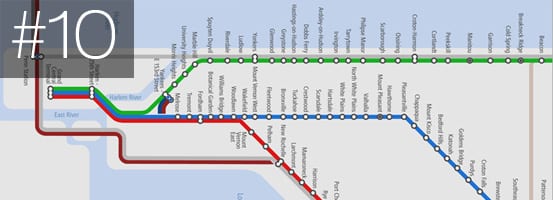
Tuesday Tour of Metro-North: A new system map
Marking the end of my three year Metro-North Panorama Project, this post contains a system map that I designed, which contains links to all of the station tours featured on the site.
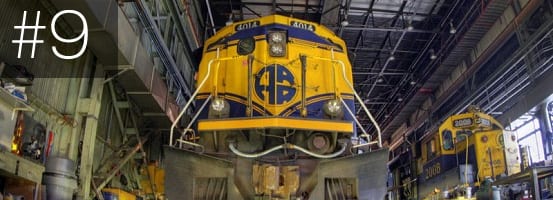
Behind the scenes of the Alaska Railroad…
A fisheye view of the Alaska Railroad that most people don’t get to see – including the operations center, and locomotive shops. And yes, I got quite a few disgruntled readers whining about too much fish eye.
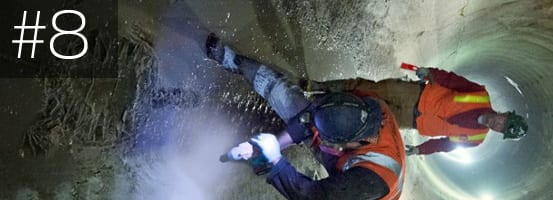
Construction on East Side Access Project Halted Indefinitely
Sorry, some ancient fossils have been discovered and the project connecting Grand Central to Penn Station has been halted. It may be worth mentioning that the date on this post is April 1, 2013.

Remembering the Upper Harlem Line, Part 1
Some folks loved my look back at the abandoned stations of the Upper Harlem Division on the 41st anniversary of its demise (for passenger service, at least), detractors wondered why I bothered, considering that there’s a book that does the same. Nonetheless, I think the story is worth being told. Despite those many years of inactivity, it is surprising that old infrastructure like bridges still exist, telling the story of the past.
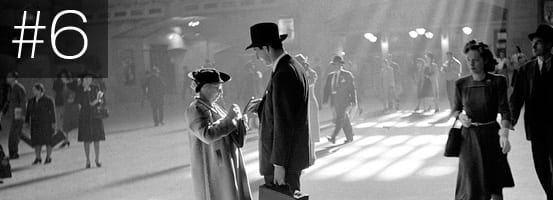
The life of a Grand Central commuter – Photos from the Farm Security Administration
If only my old photography art history teacher saw me now… Various programs focused on economic recovery after the Great Depression were documented and photographed, providing an excellent look into life in the early ’40s. Even things that we find inane, like kissing your wife goodbye at the station, and reading the paper on the train, were photographed. It is a little slice of life of a commuter to Grand Central.
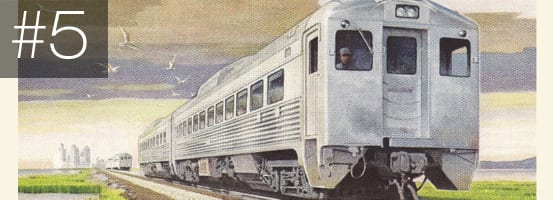
The Budd Rail Diesel Car, and more art from Leslie Ragan
A look back at the Budd Rail Diesel Car, and the beautiful art used to advertise it by artist Leslie Ragan.
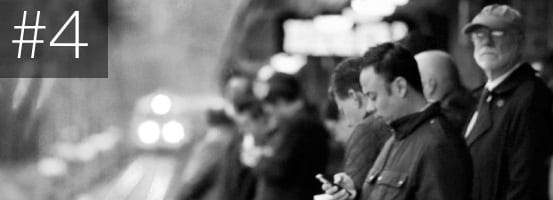
Black and White Photographs: Commuter Life
Capturing the life of a commuter after a deadly crash on Metro-North, my series of black and white photographs captures the emotions of that first week back to work. It was an atypical response to the crash, amid the constant sensationalism of the media, and the pandering of politicians.
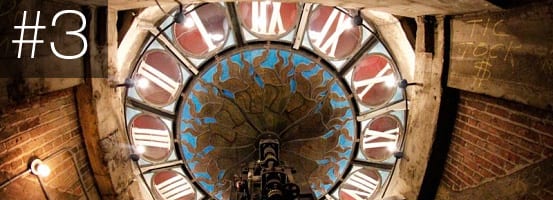
The Coolest Place in Grand Central: The Clock Tower
A little trip to see the most amazing place in Grand Central Terminal. The fact that the clock on the front of Grand Central Terminal actually has a little window that opens so one can look down at Park Avenue is for the most part a well kept secret. It is, however, one of the coolest windows in all of New York City.
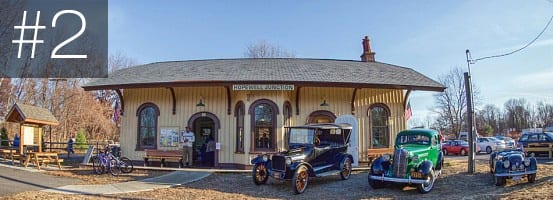
The opening of the Dutchess Rail Trail, and the Hopewell Junction Depot
Checking out the opening of the Dutchess Rail Trail, and the new interpretive panels (designed by me) at the restored Hopewell Junction depot. The popularity of the post was largely due to my argument that the once laudable concept of rail trails in preserving history has now been perverted by folks that look to take down active railroads to replace them with trails… something that is going on in several places in New York as we speak.
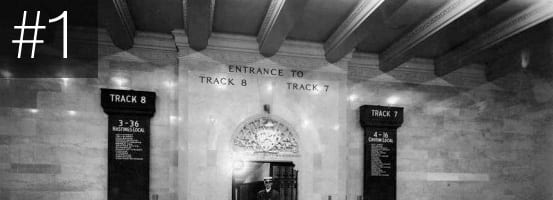
The Mystery of Grand Central’s Suburban Concourse
Ah, yes. The most popular post of 2013 is also the most controversial thing I’ve ever posted on this site. After I discovered several photos, postcards, and even period newspaper articles showing the lower level of Grand Central with single digit track numbers (unlike the triple digits you’ll find today) I came up with a theory that would try and explain it. I hoped that someone out there might have more evidence to suggest why this change happened, but responses certainly ran the gamut – including accusations that I photoshopped the photos. The mystery still exists. Will we ever find the answer?


All neat posts throughout the year.
At the risk of ruffling some feathers, I would like to offer some alternative thoughts on the destruction of Pennsylvania Station:
–It was only the headhouse that was demolished, not the actual railroad station. The most important part of the station is the trains themselves, not the building. The trains never stopped running, and continue to run to this day.
–At the time the plans were made, in the late 1950s, the design of the replacement building was a good one. The new station was sized appropriately for the amount of passenger traffic expected, and it made good sense to build a sports arena atop a major public transportation terminal. It made money for the railroad that was desperately needed. The new dropped ceiling and fluorescent lighting were the popular style of the times, and everyday travelers saw the new station as more attractive than the old dirty building.
Also, in more recent years traffic at Pennsylvania Station has grown because of the growth of distant suburban commuting areas and the transfer of several rail routes to it (NJT’s Morris & Essex Lines, all Boston through trains, and Hudson Valley through trains). Further, the LIRR’s Brooklyn terminal declined in importantance relative to Penn.
–We cannot ignore the economic issues that were at hand. Passengers had abandoned the Pennsylvania Railroad’s long distance and local trains, and the railroad was losing serious money on its passenger service. Maintaining the station building was a costly burden, which included $1 million a year (in 1950s dollars) just in property taxes. The railroad had appealed to the government for some relief of these onerous burdens, but the government was not interested. The station building could’ve been saved had either the city, state, or Port Authority taken an interest.
–As to Grand Central, in my opinion it was governmental intervention that finally saved the building. After the Supreme Court decision, the Penn Central, owners at the time, just did nothing. The building was not maintained, and as the years went by, the decay became more and more unpleasant for passengers. Unseen behind the walls was the weakening of structural girders and destructive water penetration.
I believe it was the willingness of New York to invest hundreds of millions of dollars in a total restoration of the terminal, which included expensive repairs of the structural problems, that saved the building. Without those repairs, the building would’ve eventually decayed to the point of being unsafe and demolished. A similar commitment would’ve been necssary to save Pennsylvania Station.
All are excellent topics. And for the record, I find your fish-eye photos to be a welcomed change of pace from what one can find on many, many other sites. I guess of the bunch, my personal favorite was Commuter Life — you handled the topic with compassion and class. Bravo!
Again all where great topics and all were written very well. My vote for number 1 would be the post about the Hopewell station and the rail trail. You made some very important points about the rail trail people and how many of them are pushing their goals without much regard for preservation that many volunteer railroads do. To bad that so many people today cop the attitude of “my way or the highway”. If only people could reach common ground. Anyway l’m looking forward to your posts for 2014.
Maybe ,just maybe,if McKim, Mead, and White and the PRR brass had been more restrained in there quest for an impressive architectural structure that was a “symbol” of the grandeur of the mighty PRR, the Station may have survived .All that vast interior space was not necessary . By contrast , GCT is a marvel of compactness and efficiency.
Hope this is of interest—-
http://www.loc.gov/pictureny1785s/item/.photos.35112p/
The issue for both stations was that the railroads were losing a great deal of money providing passenger service.
Actually, the New York Central probably would’ve torn down Grand Central Terminal in the early 1960s had it not been able to build the Pan Am building and get revenue from that. Later on, the plans weren’t so much to demolish Grand Central but built an office building on top of it to earn revenue. But such a building would’ve still ruined Grand Central architectually.
One key difference in the overall project designs by the two railroads was that the New York Central was able to sell much of the air rights over its terminal yard trackage; the Pennsylvania RR did very little of that.
In Chicago, both the La Salle St station and the North Western station were replaced by office towers.
Try again
http;//www.loc.gov/pictures/item/ny1785.photos.5122p/